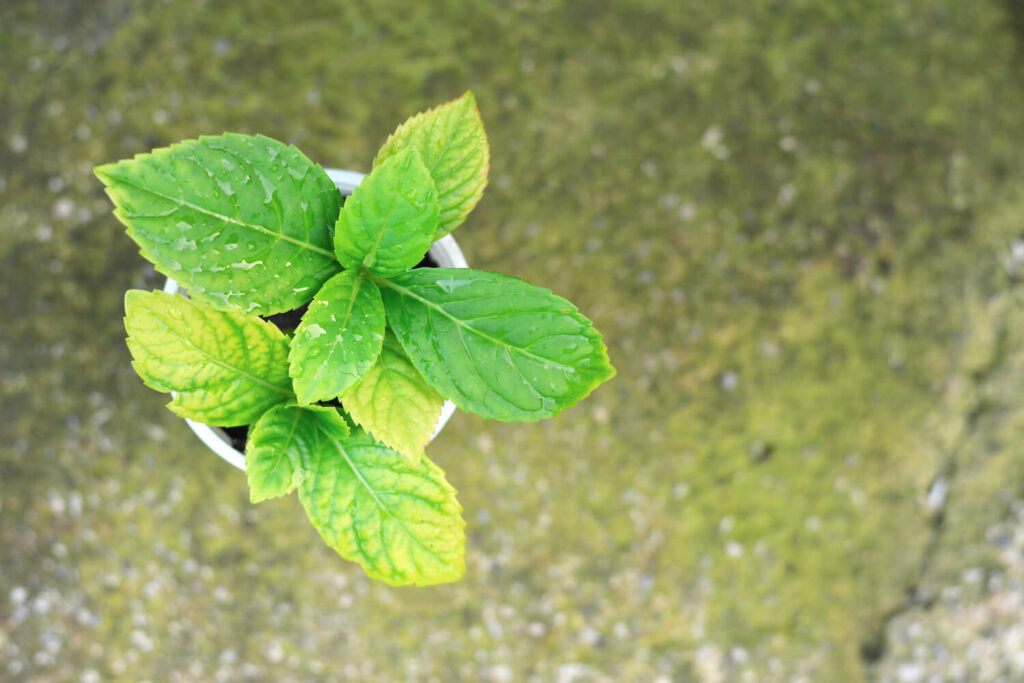See This Report about Hydrangea Leaves Turning Yellow
See This Report about Hydrangea Leaves Turning Yellow
Blog Article
Excitement About Hydrangea Leaves Turning Yellow
Table of ContentsHow Hydrangea Leaves Turning Yellow can Save You Time, Stress, and Money.See This Report about Hydrangea Leaves Turning YellowFascination About Hydrangea Leaves Turning YellowRumored Buzz on Hydrangea Leaves Turning YellowGetting The Hydrangea Leaves Turning Yellow To WorkNot known Facts About Hydrangea Leaves Turning Yellow
One opportunity is that the plant is not obtaining adequate sunshine. During the winter season, the days are much shorter, and the sun is not as intense, so make certain to place your Hydrangea in a spot where it will certainly obtain at the very least six hours of sunlight each day. An additional factor for Hydrangea yellow leaves in wintertime might be as well much water.Lastly, the leaves might be turning yellow as a result of temperature level stress and anxiety. Hydrangeas like cooler temperature levels, so if the plant is in a spot that obtains as well hot or also chilly, the leaves will certainly transform yellow. If you think temperature level anxiety could be the issue, attempt moving your Hydrangea to a various location or safeguarding it from the elements with a cloth cover.
New development will be observed in very early springtime, when you'll see eco-friendly foliage growing from stems that may have shown up dead. If your leaves are transforming brownish in spring or summer season, there are most likely various other variables at play (Hydrangea Leaves Turning Yellow). The specific factors depend upon the range and their growing problems, but generally, brown hydrangea fallen leaves signify dehydration and wilting in the warmth
The Main Principles Of Hydrangea Leaves Turning Yellow

Wilting is triggered by absence of moisture, indicating there are a couple of good techniques to make use of to avoid this from occurring. Provide your hydrangeas a healthy and balanced glug of water every few days when the temperature levels are climbing high, and treat the dirt to much better preserve moisture. After watering, a dab of compost around the base of each plant should aid with this by keeping wetness in the dirt.
This disrupts fungi spores from working out. "The Botrytis fungi prospers in cool and wet conditions, so prevent showering the entire plant when sprinkling and just water at the origins," shares Roy Nicol, a Master Green thumb. If this hyperlink you've missed the possibility for prevention and are managing an infection you need to get rid of all dead or drastically infected leaves from the plant and destroy them to stop further spread.
10 Simple Techniques For Hydrangea Leaves Turning Yellow
As a basic guideline of thumb, we recommend removing fallen leaves when they are 50% brown or greater. While browning brought on by any type of factor can not be reversed, taking the rehabilitative activity described above will encourage the plant to expand brand-new leaves so the harmed leaves either diminish normally or can be removed by the garden enthusiast.
Hydrangeas ought to be watered just when the top couple of inches of dirt are dry, and must be offered a complete soaking each time. Underwatered hydrangeas are likely to have yellow, wilting, and sagging fallen leaves.
The way you take care of hydrangea leaves turning yellow depends upon the vital issue triggering the yellow fallen leaves. This can be hard to figure out, but once you do you will have the ability to change your plant treatment appropriately to care for the issue. As stated previously, an usual concern with hydrangeas is nutrition deficiencies.
Hydrangea Leaves Turning Yellow - An Overview
Throughout the optimal view it expanding period, straight from the source you need to sprinkle at a price of regarding 1 inch each week. If you are stressed regarding not properly sprinkling your hydrangeas, there are a number of things you can do. Adding compost to the base of the plants over the origin area assistance to regulate the temperature around the shrub and retain water in the dirt.
You can purchase and install straightforward watering worlds. Watering globes hold water in them and gradually launch this water into the dirt as the ground comes to be dry. Simply load the world with water, stick the spout into the dirt within the origin zone near the base of the plant, and leave it in position till all the water is gone.
If it is too severe, some plants will never recover from transplant shock and will certainly remain to decrease up until they die. Decrease transplant shock by including as numerous roots as possible when excavating up your plant to relocate it. Be sure to provide even more water than normal in the weeks complying with planting to help your plant recoup and grow new origins.
The Buzz on Hydrangea Leaves Turning Yellow
To stay clear of spreading fungal conditions, make certain to thouroughly tidy and sanitize any pruning devices before and after usage. Finally, you can attempt to flush the roots with water to get rid of excess fertlizer.
Your hydrangea plant favors well-drained, damp dirt. If the pot has poor water drainage, or your soil is flooded, the fallen leaves will start to transform yellow. Overwatering makes the soil soaked (Hydrangea Leaves Turning Yellow). Swamped and soggy soil can bring about stunted growth, fallen leave staining, and, worst of all, rot fungal illness. Although over-watering can be harmful, under-watering is not an alternative either.
If you do not sprinkle your hydrangea plant for more than a week, the leaves will start transforming yellow. Fungal illness that attack the plants tend to reveal indicators on the origins and the fallen leaves of the plant.
Some Known Facts About Hydrangea Leaves Turning Yellow.

Report this page